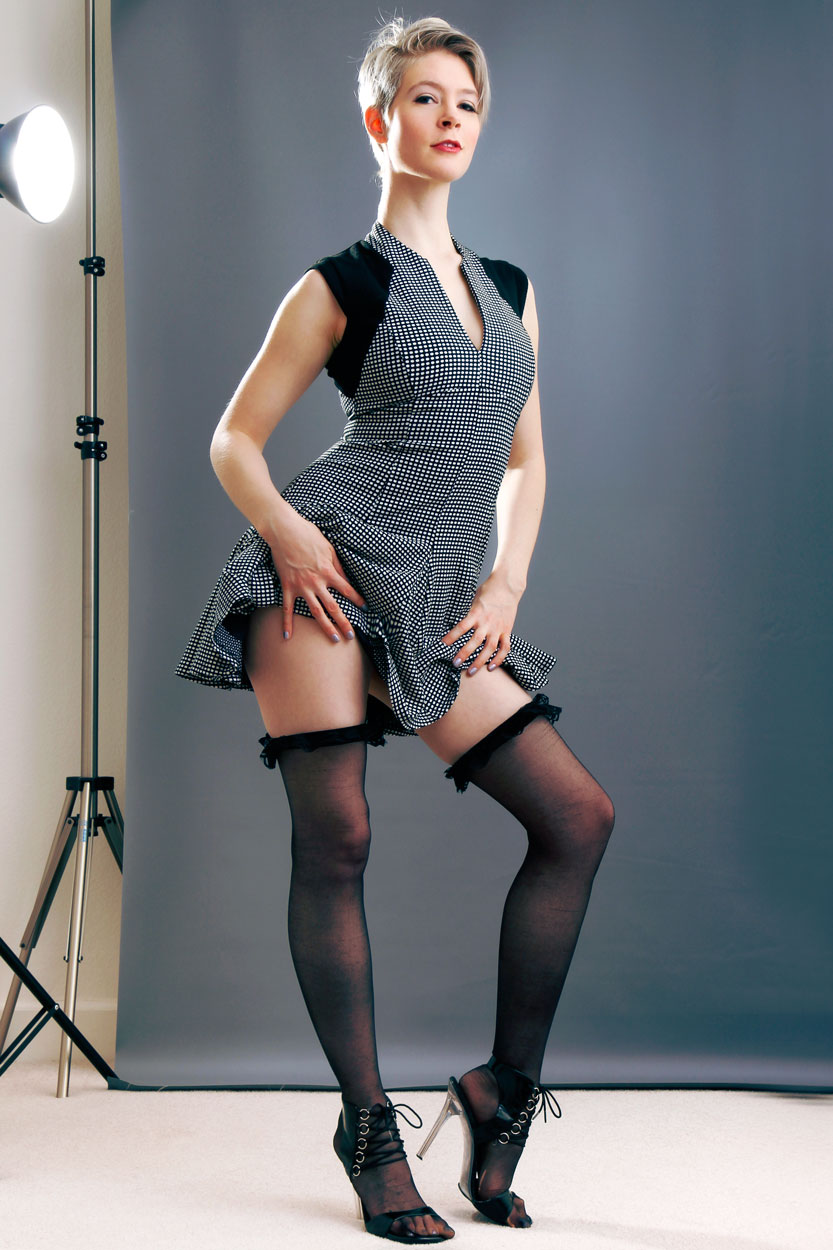Today’s Post by Joe Farace
Each year on May 15th, we recognize the stylish variety and color available on National Nylon Stocking Day.
Stockings worn before the 1890s were made from woven cloth such as cotton, linen, wool or silk. Before the 1920s, women’s stockings were mostly worn for warmth. In the 1920’s as the hemlines of women’s dresses rose, women began wearing stockings over their exposed legs. These stockings were sheer, made first of silk or rayon, followed by nylon after 1940.
 Chemical company DuPont’s introduction of nylon in 1939 began a high demand for stockings in the United States. As nylon stockings were inexpensive, durable, and shear, up to 4 million pairs would be purchased each day.
Chemical company DuPont’s introduction of nylon in 1939 began a high demand for stockings in the United States. As nylon stockings were inexpensive, durable, and shear, up to 4 million pairs would be purchased each day.
On February 11, 1942, as America entered World War II, DuPont ceased production of nylon stockings and switching its focus to the manufacture of parachutes, airplane cords, and rope. This created a mass shortage followed by a black market for stockings. At the end of World War II, DuPont resumed production of the stockings but could not meet the demand leading to nylon riots in American stores.
Pantyhose were introduced in 1959, providing an alternative to stockings which led to a decline in their sales. In 1970, for the first time, United States sales of pantyhose exceeded stocking sales and have remained the same ever since. In 1987, there was a slight decline in sales in pantyhose due to the newly invented hold-ups. However, they remain the most purchased kind of hosiery.
Today nylons come in every color and a variety of styles. Show off your fashion sense with the latest styles. Share using #NylonStockingDay to post on social media.
How I Made this Shot: Today’s image of Pam Simpson was made during our ninth studio session together when I decided to photograph her with an accent on her legs. The shot had a behind-the-scenes theme and, as part of the concept, she was photographed against Savage’s Photo Gray Infinity vinyl background hanging from JTL background stands. It was shot using a pair of inexpensive monolights, including one that appears in-shot, at camera left that I don’t even own anymore having standardized on monolights from Paul C. Buff, proving once again that light is light.
The camera used for today’s featured portrait was a Canon EOS 60D with an EF-S15-85mm f/3.5-5.6 IS USM lens (at 32mm) with an exposure of 1/200 sec at f/4.5 and ISO 800. Image was retouched and then processed using Vivenza and Color Efex Pro Photoshop-compatible plug-ins but first color corrected with PictoColor’s iCorrect Portrait.
Just a reminder: Podcast #3 is live now on my YouTube channel, Joe Farace’s Videos, featuring a look at the Leica Z2X and my experiences shooting 22-year old Agfa color film in a 40-year old Canon SLR, plus some information on where I get my ideas for blog posts!